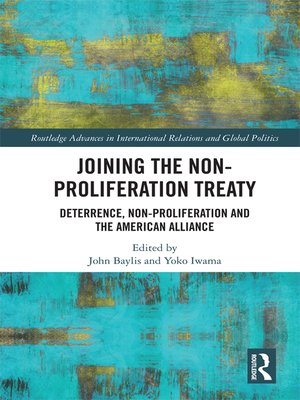Joining the Non-Proliferation Treaty
ebook ∣ Deterrence, Non-Proliferation and the American Alliance · Routledge Advances in International Relations and Global Politics
By John Baylis

Sign up to save your library
With an OverDrive account, you can save your favorite libraries for at-a-glance information about availability. Find out more about OverDrive accounts.
Find this title in Libby, the library reading app by OverDrive.



Search for a digital library with this title
Title found at these libraries:
| Library Name | Distance |
|---|---|
| Loading... |
What were the calculations made by the US and its major allies in the 1960s when they faced the signing of the Non-Proliferation Treaty (NPT)? These were all states with the technological and financial capabilities to develop and possess nuclear weapons should they wish to do so. In the end, only the United Kingdom and France became nuclear weapon states. Eventually, all of them joined the non-proliferation regime.
Leading American, British, Canadian, French, German and Japanese scholars consider key questions that faced the signatories to the NPT:







